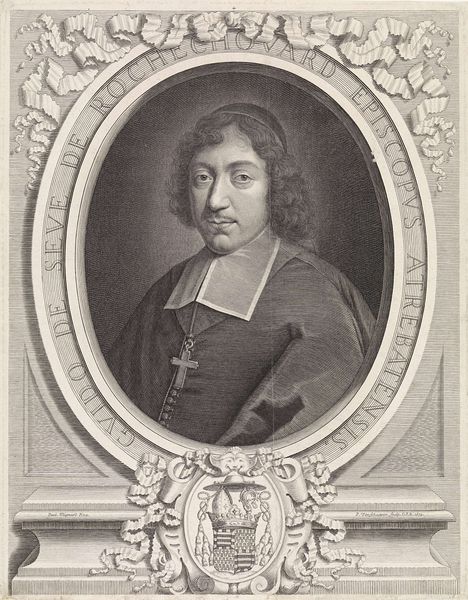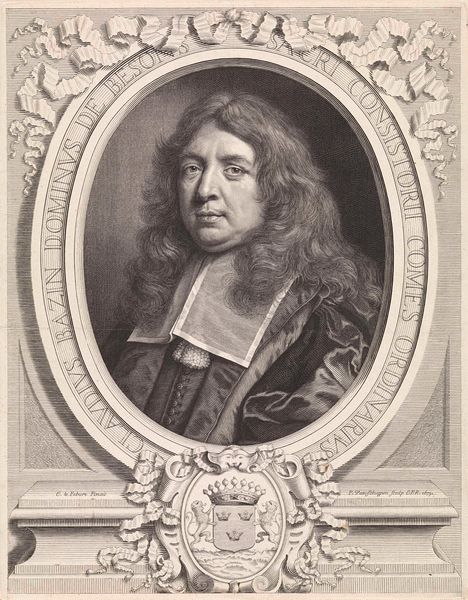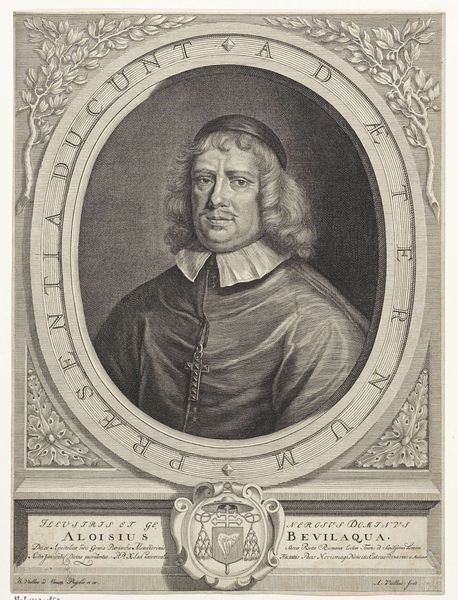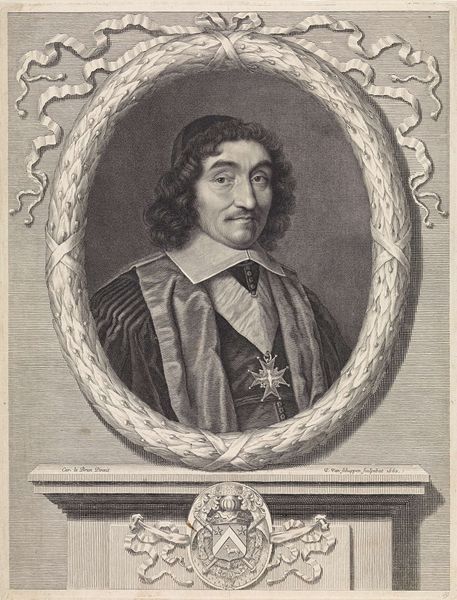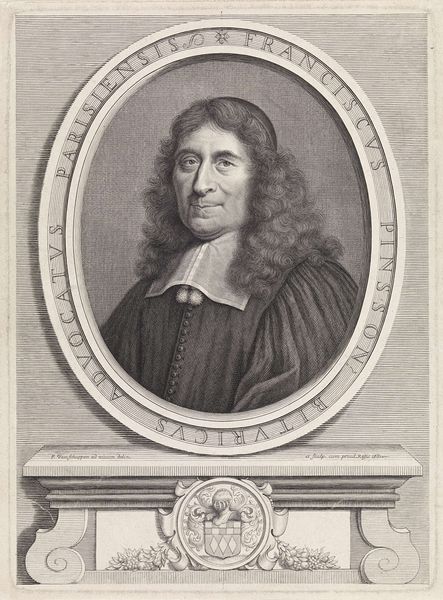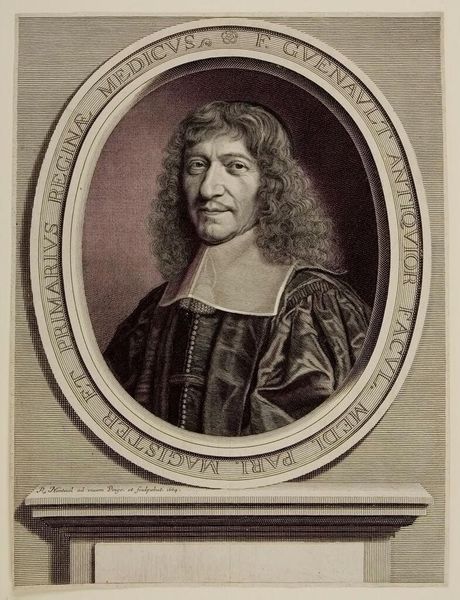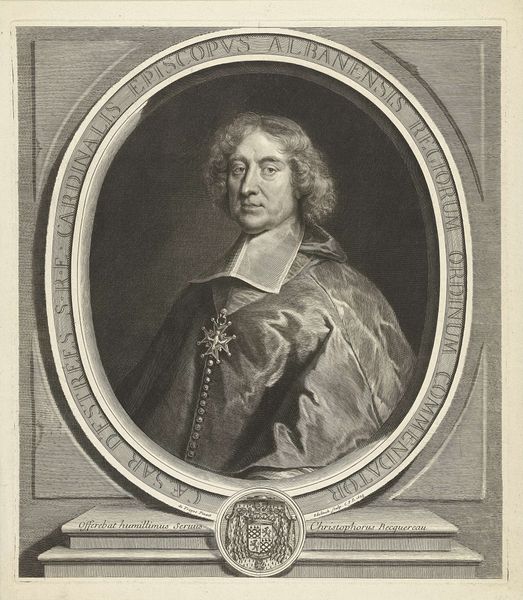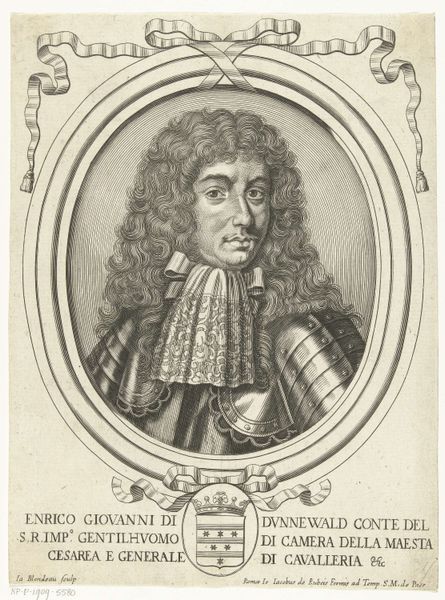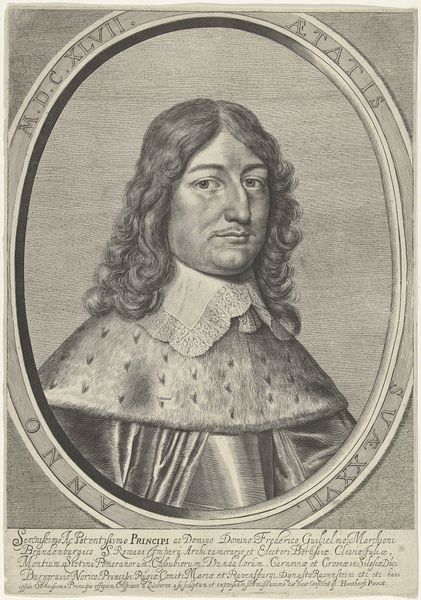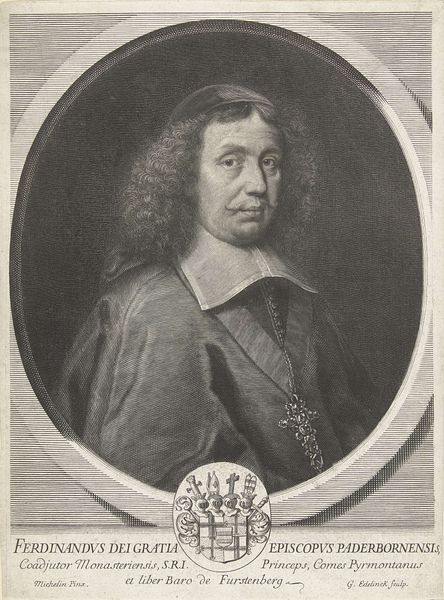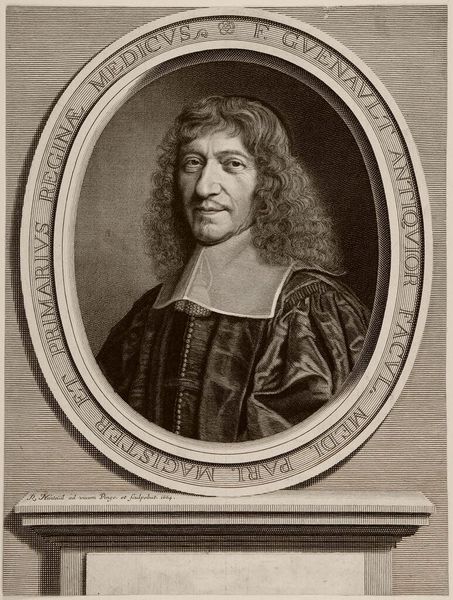
print, engraving
#
portrait
#
baroque
# print
#
engraving
Dimensions: height 348 mm, width 271 mm
Copyright: Rijks Museum: Open Domain
Curator: This engraving, created by Pieter van Schuppen in 1668, captures the likeness of Pierre Séguier, the French Chancellor. It’s part of the Rijksmuseum collection. Editor: It’s quite formal, isn’t it? Very controlled. The tight lines and monochrome palette emphasize a sense of order and seriousness. You immediately grasp the chancellor’s status. Curator: Precisely. Schuppen’s engraving process is meticulous. Consider the layering of lines to achieve shading and texture—it was printed, likely, to commemorate Seguier and to circulate his image. Engravings like this had a function; they spread ideas about power and nobility. Editor: Yes, and let’s note how that oval frame emphasizes the composition. The eye is immediately drawn to Séguier's face, but then, is led outwards towards the ornate detailing of the frame, ribbon, and heraldry. This layering enhances the depth, offering visual rhythm across the artwork. Curator: The very choice of engraving as a medium speaks to its purpose. Prints are reproducible and were used widely to disseminate portraits and propagate influence, making art accessible to a broader audience beyond the elite circles. Editor: I agree, yet the craftsmanship also elevates the subject. Notice the use of light and shadow that renders Seguier's facial features almost sculptural. It adds considerable visual weight and importance to him. Curator: Think also of the engraver’s labor! This wasn’t just about replicating an image but shaping public perception. The social impact of this relatively accessible portrait shouldn't be discounted; its availability reshaped consumption patterns for art during that period. Editor: A powerful piece, the composition and craftsmanship working in harmony. It allows us to observe Séguier, and the status surrounding him, clearly. Curator: It’s a reminder that even seemingly simple artworks held complex social roles as objects of cultural production, reproduction, and aspiration.
Comments
No comments
Be the first to comment and join the conversation on the ultimate creative platform.
